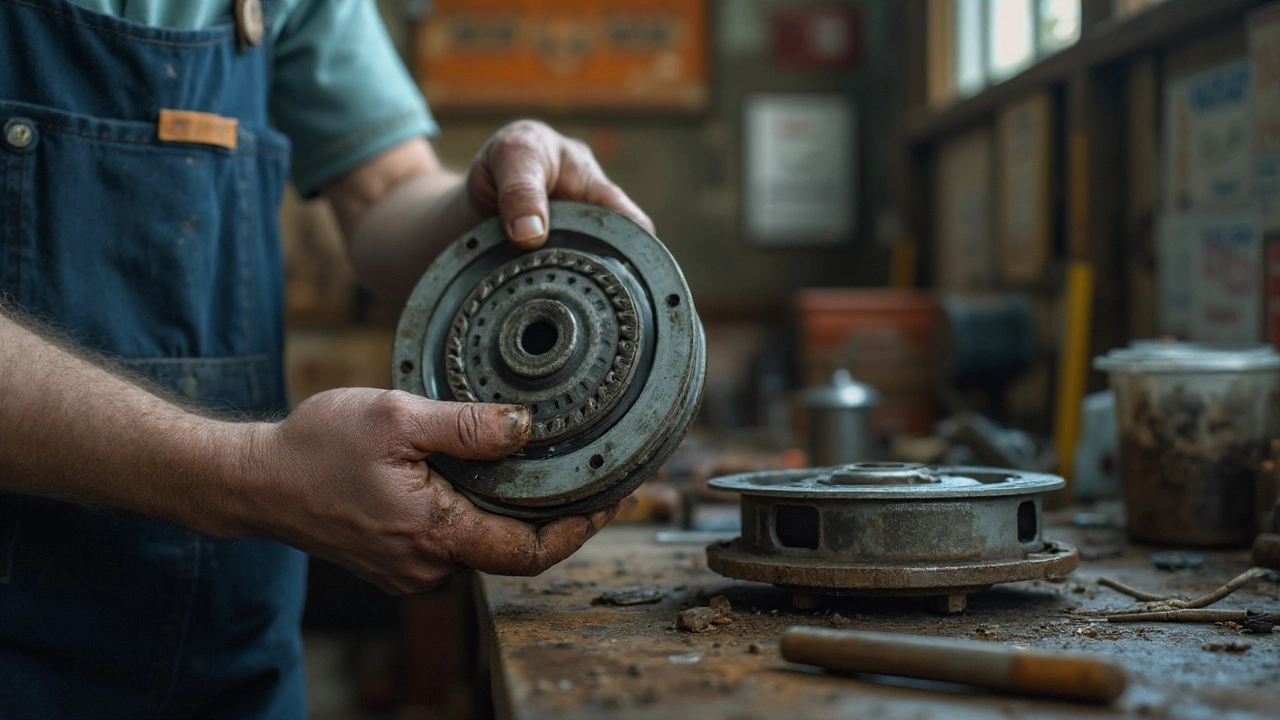Reaching 200,000 miles on a single clutch sounds legendary—but is it actually doable, or just garage folklore passed around like tales of unstoppable old Volvos? The truth is, the answer isn’t black and white. Some drivers see their clutches fail just past 50,000 miles, while others claim theirs outlived the bodywork. All sorts of myths swirl around car maintenance, but the clutch, quietly working between your engine and wheels, gets forgotten until trouble strikes. With a few smart habits and maybe a bit of luck, your clutch could surprise you. But to know what’s realistic, you have to dig into how clutches work, what kills them, and which signs spell trouble as the miles add up.
What Determines Clutch Lifespan?
The clutch doesn’t just wear out at a set number on your odometer. Instead, its lifespan is written by a mix of driving style, traffic, car design, and simple luck. For example, if you drive a lot in busy city streets—think Manchester’s infamous ring road—your clutch gets much more punishment than if you cruise down long, empty motorways. Every start and stop wears a little more. Compare that to long-haul drivers who might not disengage the clutch for miles on end, giving it a real break.
The type of car matters too. Diesel engines generally have clutches built for higher torque, so those sometimes last longer. Lighter cars put less strain on the clutch than heavy workhorses loaded down with tools or deliveries. Then there’s how the clutch was made—organic linings typically wear faster than ceramic, for example. Some modern clutches even have dual-mass flywheels to smooth things out, but while they’re good for comfort, replacement costs go up if something fails.
Look at actual survey data and you’ll see wild ranges: some Ford Fiestas have clutches going past 150,000 miles, but certain sports models burn through them before hitting 75,000. According to the AA in the UK, most drivers see around 60,000 to 100,000 miles, but there are plenty of outliers. Keeping a record of what’s failed on your friends’ or family’s cars isn’t a bad thing—patterns often show up locally.
| Car Type | Average Clutch Life (Miles) |
|---|---|
| Small Petrol Hatchback | 60,000 – 90,000 |
| Diesel Estate | 90,000 – 120,000 |
| Large Commercial Van | 40,000 – 70,000 |
| Sports Car | 30,000 – 80,000 |
| Long-Distance Coach | 120,000 – 220,000 |
All told, the way you drive and the car you have matter more than the badge on your bonnet. Clutch wear is slow and sneaky. Treat it right, and 200,000 miles isn’t just some unicorn. Slip up, and you’ll feel the pain—both in pedal and in wallet—long before that mark.
The Habits That Make or Break Your Clutch
Ever watched someone keep their left foot hovering on the clutch pedal even at traffic lights? That innocent habit is called “riding the clutch,” and it chews through the clutch friction material faster than you can say MOT failure. Stop-start traffic, especially the endless jams near the Trafford Centre, grinds away at clutches regardless of car brand. But some drivers pile on bad habits—resting on the clutch, holding the car on a hill with the clutch, or launching like it’s a race every time the lights go green.
Changing those small actions can add years to your clutch’s life. Here are a few clutch-friendly tips that really work:
- Always take your foot completely off the clutch pedal once you’re in gear and moving.
- If you need to stop for more than a few seconds, put the car in neutral and let the clutch out.
- Use your handbrake (not clutch) for hill starts—every time you hold on the clutch, you’re shaving miles off it.
- Shift gears smoothly; don’t force it or “drop” the clutch quickly except in emergencies.
- Carry less junk in the boot. The lighter the load, the less stress on the transmission system.
One more thing that destroys clutches fast: towing. Towing cars, caravans, or trailers—especially up steep hills—works your clutch to the bone. Make it a rare event or practice good technique, using revs sensibly and not “smelling” that burnt clutch aroma.
Maintenance helps too. Check your clutch fluid if the system’s hydraulic, as low fluid can mean more pedal travel and uneven wear. Listen for odd noises: grinding, buzzing, or a squeak during gear shifts isn’t normal. Address issues right away to avoid bigger repairs later. Keeping up with general servicing—the right gearbox oil and checking for leaks—won’t hurt either.
Don’t forget driving environment. If you live around Chorlton’s rolling hills, you’ll work the clutch harder than someone in Norwich. Even on flat ground, loads of short trips never let the system settle. But if you rack up motorway miles, your clutch could easily cruise well over 100,000—so don’t follow your mate’s mileage blindly. Your “cycle” might be completely different.

Spotting a Clutch on Its Last Legs
No one likes surprise garage bills. But clutches rarely fail without warning—they tend to get lazy first. Trouble signs aren’t subtle if you pay even a bit of attention. You might notice the pedal gets spongy, or you suddenly need to push it further down to change gears. A burning smell after a spirited drive, especially in stop-and-go traffic, is a big red flag.
Then there’s “slipping”: you rev but the car doesn’t move as quickly as before, especially in higher gears or going uphill. If you’re lucky, the failure comes gradually, giving you time to plan repairs. If not, you could be stranded. Some clutches start “juddering”—the car shakes when you let the clutch out—or they get noisy, whining or rattling during gear changes.
Catching these symptoms early saves money. If you notice the biting point (where the clutch “catches” as you lift your foot) is much higher than it used to be, don’t ignore it. Clutch cables can sometimes stretch, but often, it’s the friction plate wearing thin. Compare your pedal feel to what you remember when the car was new. It should feel positive, not vague or sloppy.
Here’s a classic home test: find a quiet, flat bit of tarmac. Put your car in third gear, then gently try to let the clutch out while revving slightly. If the engine doesn’t stall and the car barely creeps forwards, your clutch is almost certainly near the end—get it checked now before you get stranded at the most inconvenient moment, like Friday night outside the footy ground.
Expect the costs to vary—a simple clutch kit swap can cost as little as £300 for small cars but soar over £1,400 for big SUVs or performance motors, thanks to expensive dual-mass flywheels or awkward engine designs. Factor in extra for labor if your mechanic discovers the flywheel’s damaged, or the release bearing needs swapping. Bite the bullet for quality parts; cheap replacements kill reliability fast and can mess up resale value.
Real-World Stories and Tips for Chasing High Mileage
Plenty of drivers have seen a clutch pass the 200,000-mile mark, especially in older models from Honda, Volvo, or Toyota with patient owners behind the wheel. These unsung heroes follow a simple formula: gentle starts, careful gear changes, loads of motorway miles, and almost no bad habits. Some swear by “double clutching” (an old-school gear matching move) to help, but for most, just not abusing the clutch is enough.
Look at forums like PistonHeads and Honest John, and you’ll find reports of diesel Skodas and VW Passats hitting outrageous clutch lifespans, often racking up their miles in steady commutes up and down the M6 or A1. On the other hand, performance cars hitting track days or suffering regular “boy racer” action end up in the shop for clutch jobs before half that distance.
Want to chase clutch lifespan records yourself? Avoid short trips, keep your revs sensible, and learn to “read” the car—anticipate traffic instead of reacting, and plan your stops. Don’t haul heavy loads if you can avoid it. If you’re teaching a new driver in your family car, limit those clutch-burning hill starts and don’t let them ride the pedal. The best clutches seem to last longest with one consistent driver rather than a mix of styles.
It’s not just about babying the clutch, though. Keep tyres well-inflated, get your car serviced on time (gearbox oil included if your manufacturer recommends it), and don’t ignore warning signs. Driving smoothly helps the engine, too—not just the clutch. If you’re ever stuck in gridlock, treat every clutch release as a chance to practice gentle, controlled movement—not to join the drag strip of frustrated Mancunians itching to get home.
So, can a clutch really last 200k miles? For most people, probably not—but it’s not impossible. If you drive mindfully, handle your car with care, avoid silly mistakes, and stay on top of maintenance, you’re giving your clutch every possible chance. And if it does go the distance, you might just have a story that gets a knowing nod from every seasoned petrolhead over a pint—or at least save yourself a few grand on repairs along the way.

